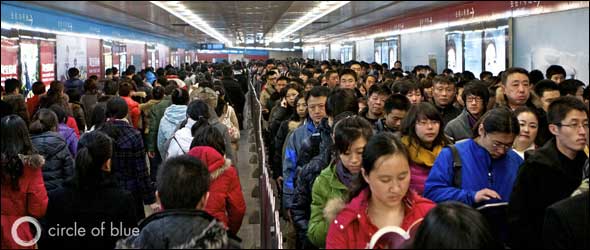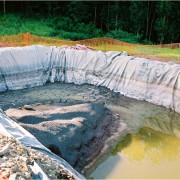Peter Gleick: Where Have All Our Drinking Water Fountains Gone?
Where have all our drinking water fountains gone? They have been disappearing, one by one, from our public spaces, parks, offices.
And yet, it has become easier and easier to find expensive and environmentally damaging commercial bottled water. Safe, free drinking water used to be common: we all used public water fountains. Now they are hard to find, dirty, or broken. The average American now drinks nearly 30 gallons of commercial bottled water per year, up from 1 gallon in 1980, creating plastic waste and wasting energy. One of the reasons for this explosive growth in the sales of bottled water is the disappearance of public drinking water fountains.
It is time for a water fountain renaissance and new technology is available to help. The Pacific Institute, working with Google application developers, is about to launch a new, free smartphone application called WeTap. This tool makes use of “crowd-sourced” mapping: the ability to tap into the knowledge of crowds to provide free information about issues of public concern. WeTap does two things. It lets smartphone users:
- Add public drinking water fountains to a national database of fountains, with information on their location, condition, and quality, including uploading a photo and comments; and
- Find a working fountain when they want one.
Why map drinking fountains? Public spaces need to provide public water fountains, and municipal systems must continue to improve the quality of the water they deliver and to educate consumers about the bargain we are getting with tap water. We need our public water fountains to be maintained, cleaned, and made even more widely available, and to be vocal in fighting the trend to eliminate public water fountains.
With WeTap, Android smartphone users (a version for other phones will be developed when possible — any pro-bono iPhone developers out there?) will be able to find a working water fountain when they want one — and they can quickly and easily add public drinking water fountains they encounter to a national database of fountains right from their smartphones.
The beta-test version of WeTap is ready and we need volunteers to quickly and intensively map Berkeley and the East Bay. The Pacific Institute is recruiting volunteers who own Android-capable phones and have both gmail and Picasa photo accounts to test the application by finding water fountains and uploading them on their phones: users agree to provide feedback on the application. People interested in participating should send an email to wetap@pacinst.org.
Valuing tap water — both the quality and access — is an important step to ensure our water remains safe, tasty, and protected. For more information, visit www.wetap.org.
Peter Gleick









I was at a conference in NJ a few years back and it was hotter than blazes. The water fountains had all been vandalized and the only source for water was vendors at $2/bottle. Was there a connection between the bottled water sellers and the broken fountains? –Tom K.
Let’s hope an iphone app developer steps up quickly. This would be really nice to have for my iphone.